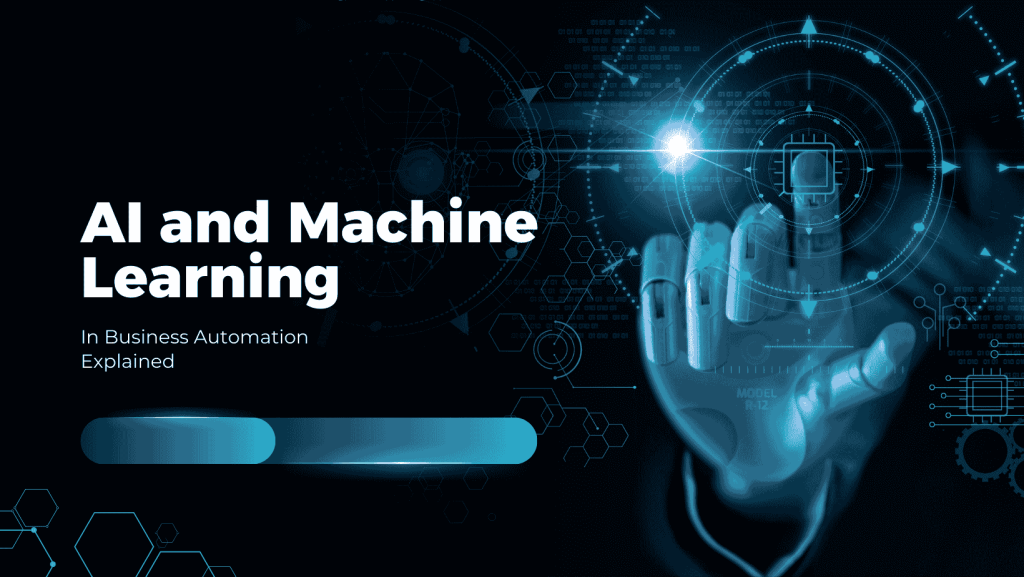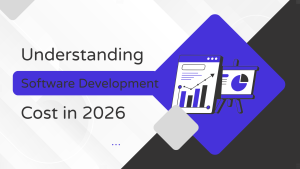Introduction
Automation is no longer a glossy buzzword; it’s a necessity for businesses navigating the complexities of a digital economy. At the heart of this shift lies artificial intelligence (AI) and machine learning (ML), two technological forces redefining how businesses operate. But what exactly does this look like? How are AI and ML powering next-gen automation? And what should business leaders know to stay ahead?This post explores the profound role AI and ML solutions play in business automation, outlining their benefits, implementation steps, real-world use cases, and what the future holds. Whether you’re a seasoned tech enthusiast or a company executive, you’ll gain the insights to level up your understanding of these game-changing technologies.The Benefits of AI & ML in Business Automation
AI and ML do more than just automate repetitive tasks. They bring intelligence to automation, enabling systems to learn, adapt, and optimise over time. Key benefits include:1. Enhanced Efficiency and Productivity
Automation with AI goes beyond rule-based actions to optimise workflows dynamically. For instance, AI-powered chatbots can process customer queries instantly, leaving human agents to tackle more complex tasks. This not only saves time but boosts productivity across teams.2. Scalability
AI-driven systems scale effortlessly. As data volumes increase, ML algorithms process and analyse that data faster than any human could manage, ensuring your organisation grows without bottlenecks. Cloud-based AI platforms like Google AI and AWS SageMaker simplify this scalability.3. Improved Decision-Making
AI systems identify trends and provide actionable insights by analysing historical and real-time data. Predictive analytics powered by ML, for example, gives businesses the ability to anticipate sales trends or potential supply chain disruptions.4.Cost Savings
Though the initial investment in AI and ML might seem high, long-term cost savings are significant. Automation reduces manual work, lowers error rates, and provides return on investment by cutting operational expenses.5. Customer Personalisation
AI algorithms tailor customer experiences at scale. Think of platforms like Netflix or Spotify, which use ML to suggest content based on user behaviour. Similarly, retail companies utilise dynamic pricing algorithms to present customised discounts.How to Implement AI & ML Solutions in Your Business
Implementing AI and ML in business automation isn’t a one-size-fits-all process. It requires careful consideration and strategy. Here’s a step-by-step breakdown to guide you through the process.Step 1: Define Business Goals
What pain points are you trying to address? Whether it’s minimising customer wait times or streamlining supply chains, clearly defining your goals will inform which AI or ML solutions are most suitable.Step 2: Assess Your Data
AI and ML are only as effective as the data they’re trained on. Audit your existing databases to assess quality and completeness. Robust data pipelines are critical for AI success. Gartner estimates poor data quality costs organisations, on average, $12.9 million each year.Step 3: Choose the Right Tech Partners
Select platforms and providers aligned with your needs. Established players like IBM, Microsoft Azure, and open-source platforms such as TensorFlow offer varying capabilities based on your business size and industry.Step 4: Develop Custom Models or Use Pre-trained Ones
Depending on the complexity of your requirements, your business may need custom ML models, or you could leverage pre-trained solutions to save time and resources.Step 5: Pilot and Test
Run small-scale pilots before full deployment. Measure performance against key KPIs to identify gaps or necessary refinements. Agile iterations ensure a smoother rollout.Step 6: Train Your Workforce
Your employees need to know how to leverage these technologies. Upskill your teams with focused training sessions around AI tools and automated workflows.Step 7: Ongoing Monitoring and Optimisation
AI models degrade over time if left unchecked. Continuous monitoring ensures performance stays sharp while algorithms adapt to real-world changes.Real-World Applications of AI & ML in Business Automation
AI and ML are not hypothetical concepts anymore; they’ve made their mark across multiple industries. Below are standout examples highlighting their potential in business automation.1. Manufacturing
Predictive maintenance powered by ML helps manufacturing giants avoid equipment failures. Siemens, for instance, uses AI to analyse data from sensors, identifying potential breakdowns before they occur.2. Healthcare
AI streamlines administrative tasks, such as scheduling and billing. Deep learning models also assist in diagnostics by analysing X-rays and CT scans far faster than human radiologists, as demonstrated by Google Health’s lung cancer detection models.3. Retail
AI ensures stock optimisation and targeted marketing. Retail titan Amazon continuously improves inventory forecasts and personalises customer shopping experiences using AI-driven recommendation engines.4. Finance
ML algorithms automate fraud detection by identifying unusual transaction patterns. Companies like PayPal have saved millions in fraudulent activities using behavioural analytics informed by AI.5. Human Resources
ML streamlines hiring by analysing job applications for the best-fit candidates, reducing human bias and speeding up recruitment. HireVue is a popular platform automating this process.Challenges in AI & ML Implementation (And How to Overcome Them)
Despite their benefits, AI and ML implementations don’t come without hurdles. Here are some challenges and practical solutions.
1. Data Privacy and Security
Challenge: Ensuring data confidentiality is paramount, especially with stringent regulations like GDPR.
Solution: Invest in encryption and secure data storage, along with conducting audits to meet compliance requirements.
2. Initial Investment Costs
Challenge: AI implementation can be expensive upfront.
Solution: Start small, leveraging scalable cloud-based AI solutions that don’t demand hefty initial hardware investments. Demonstrate ROI through pilot projects.
3. Talent Gap
Challenge: Finding skilled professionals to implement and manage AI solutions is challenging.
Solution: Upskill your teams through tailored AI training courses, or consider partnering with AI-focused consultancies.
4.Change Resistance
Challenge: Employees may resist adopting AI due to fear of redundancy.
Solution: Frame AI as an enabler, rather than a replacement. Highlight its role in eliminating mundane tasks and creating space for creative, high-value work.
The Future of AI & ML in Business Automation
AI and ML are poised to take automation to unprecedented levels in the coming years. Emerging advancements like generative AI, edge computing, and neural networks will expand possibilities further. Experts predict AI revenue in the automation space will grow to $15.8 trillion by 2030, driving unprecedented efficiencies.
With the rise of autonomous factories, voice-activated customer service agents, and even algorithm-driven decision-making boards, AI is not just shaping the future; it will define it. Businesses that don’t adopt these technologies risk falling further behind competitors armed with speed, precision, and data-informed strategies.
Your Next Steps in the AI Revolution
AI and ML are no longer distant possibilities; they are today’s differentiators for forward-thinking leaders. Implementing these solutions in your business can unlock new levels of efficiency, improved decision-making, and enriched customer experiences.
Want to stay ahead? Explore how AI can revolutionise your operations. Get started by learning more about leading tools or consulting with experts to identify tailored solutions.
Don’t wait to look towards the future; the future is already here.



